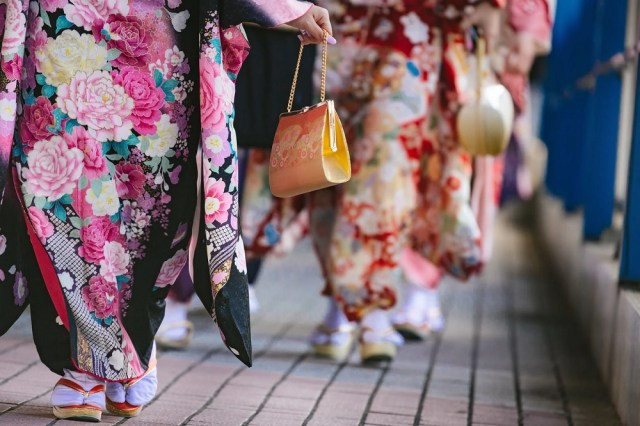
Kimono and suits are the standard clothing choice for this annual event, but this model chose something much skimpier.
In Japan, the second Monday in January is Coming of Age Day, a celebration for everyone who has or will turn 20, the traditional age of adulthood in Japanese society, between April of the previous and current years. The occasion is marked by Coming of Age Ceremonies for those living in or who grew up within the local community, often with a speech by the mayor or other prominent figure congratulating the new adults and wishing them well in their future adult endeavors.
The events often feel like a bit like a graduation ceremony, just from childhood instead of school, and attendees often dress up in formal suits or kimono. For women in particular, many opt for the style of kimono called furisode, characterized by its long, flowing sleeves.
▼ Common Coming of Age Ceremony attire
However, Japanese fashion model Rarumu Fujikawa, who turned 20 last May and was attending a Coming of Age Ceremony this past Sunday, chose to dress quite differently, and her choice of apparel has sharply divided online commenters.
“It’s OK to wear something other than furisode to Coming of Age Ceremonies,” tweeted Fujikawa along with a pair of photos of herself at the ceremony venue. That statement itself isn’t so divisive, as non-furisode kimono, as well as many non-kimono outfits, won’t necessarily raise any eyebrows at a Coming of Age Ceremony. Fujikawa’s selection of a sheer, largely see-through crop top and low-rise pants however, wasn’t the sort of ensemble that everyone considers appropriate for such an occasion.
Though the town of Kitakyushu’s Coming of Age Ceremony has become famous for the wild, uninhibited fashions annually on display, it’s very much the exception, not the norm. In the vast majority of Japanese cities, formal, traditionally sophisticated attire is expected, since even though it’s common for groups of new adults to go out and party once the proceedings are done, the ceremony itself is still meant to be an earnestly respectful moment in which to mark a major life milestone.
As such, Fujikawa’s post prompted such negative reactions as:
“Not sure that’s the sort of thing that’s appropriate for a Coming of Age Ceremony.”
“It would have been nicer of you to think about the feelings of the other people at the ceremony.”
“You showed up for your Coming of Age Ceremony in clothes that make me think you still have some maturing to do.”
“You’re practically naked.”
“It’s totally fine not to wear furisode, but take care not to show everyone your nipples, OK?”
“It’s important to consider time, place, and occasion. Taking into account how significant the ceremony is, and keeping in mind the feelings of the other people attending, I believe wearing formal, elegant clothing should be worn.”
Reactions weren’t universally negative, though, as shown in comments including:
“You look so sexy and I’m jealous of everyone who got to be at the same ceremony as you.”
“That outfit looks cold, but anything that looks cute is OK.”
“So cool!”
“Super sexy. You’re as beautiful as an angel.”
“A cute and individualistic outfit.”
“I bet you had everyone in the place looking just at you.”
The whole thing highlights an aspect of how Japan sees adulthood. On the one hand, there’s the school of thought that once you’re an adult, no one can tell you how to dress or otherwise act in social situations, and you’re free to do whatever you want. On the other hand, you’ll find no small number of people in Japan who feel that part of being an adult is choosing, on your own, to conduct yourself in ways that won’t make others uncomfortable, particularly at an event that’s not honoring you alone.
Source: Twitter/@ralumu_00 via Jin
Top image: Pakutaso
Insert image: Pakutaso
● Want to hear about SoraNews24’s latest articles as soon as they’re published? Follow us on Facebook and Twitter!